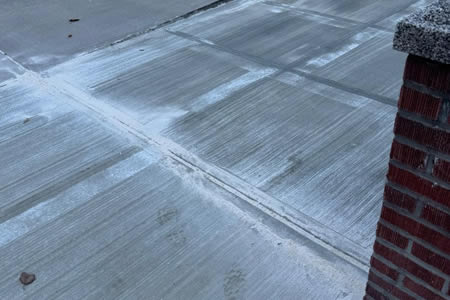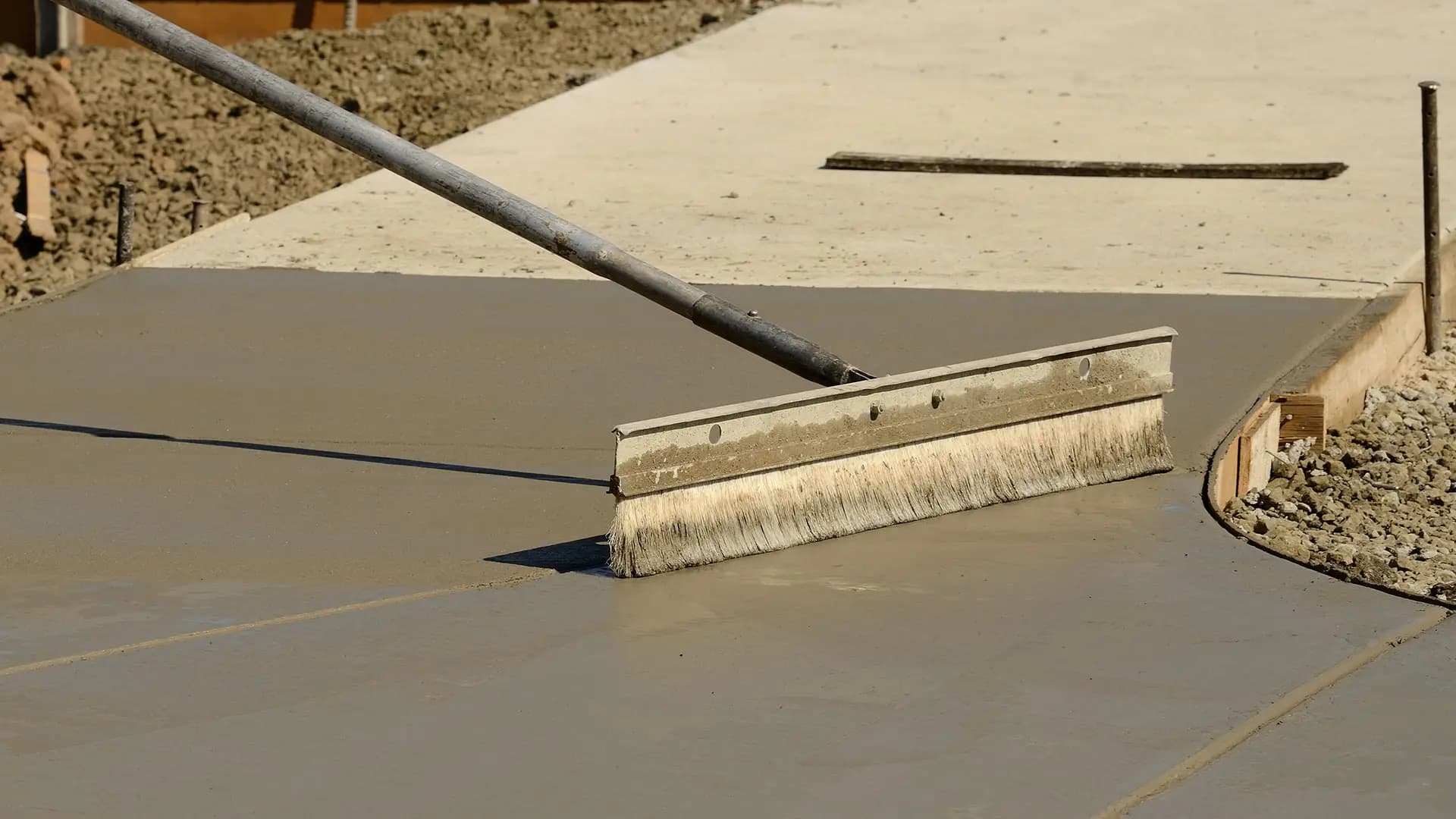How Spring Rain Can Damage Concrete Sidewalks?

Spring brings fresh blooms and longer days, but also heavy rain that can silently wreak havoc on your concrete sidewalks. Excess moisture, combined with temperature swings and leftover winter salt, can cause cracking, erosion, and surface deterioration, leading to major structural damage that often results in DOT violations and liability risks.
A study by the FHWA revealed that 36% of damage to asphalt-based sidewalks and 24% of damage to concrete-based sidewalks (having a lifespan of more than 15 years) is caused by environmental conditions such as seasonal rainfall, temperature fluctuations, and soil or subgrade movement.
This guide explains how spring rain affects your sidewalks and what steps you can take now to prevent costly repairs later.
Water Infiltration and Cracking
Concrete, by nature, is a porous material. When spring rain seeps into tiny surface cracks and joints, the water begins to penetrate the structure. With NYC’s unpredictable temperature shifts, particularly at night, this water can freeze and expand.
This cycle of freezing and thawing puts pressure on the adjacent concrete, leading to larger cracks and surface flaking known as spalling. Over time, this process significantly weakens the integrity of the sidewalks and creates both a visual and structural issue.
Soil Erosion Beneath the Slab
Heavy and consistent rainfall can gradually wash away the soil beneath the sidewalk slabs, especially in areas with poor drainage or where tree roots have already damaged the ground. This erosion causes the concrete to settle unevenly or sink, which often results in trip hazards or sloped, unstable walking surfaces. Such issues not only diminish curb appeal but also put you at risk for potential DOT violations or personal injury claims from pedestrians. If you're dealing with sidewalk violation issues, it's essential to take action and start addressing DOT violations to avoid further complications.
Growth of Algae and Mold
The damp and shaded conditions caused by spring rain create a prime environment for the growth of algae, moss, and mold. This can appear quickly and spread across the sidewalk surface, creating a slippery layer that poses a serious slipping hazard to passersby. In addition to being a safety concern, this growth can stain the concrete, leaving behind unsightly green or black patches that are difficult to remove once they set in.
Weakening of Newly Poured Concrete
If your sidewalk has recently been poured or repaired, unexpected spring rain can disrupt the critical curing process. Proper curing allows the concrete to harden and strengthen gradually and gain its full tensile strength, enabling it to withstand the test of time.
Rain at this stage can dilute the surface, causing dusting, pitting, or early cracking. Without the correct protection or curing time, the quality of your new concrete can be compromised right from the start.
Interaction with Salt Residue
Spring rain often interacts with residual salt used during the winter for de-icing. This salt can seep deeper into the concrete through rainwater, accelerating the corrosion of any embedded rebar or metal supports. This chemical interaction gradually erodes the structure, causing deterioration from the inside out. Sidewalks that are not properly sealed with high-quality sealants are particularly more vulnerable to this kind of damage.
Ways to Protect Sidewalks from Spring Rain
Protecting your sidewalks from spring rain not only prevents damage but also helps you avoid future expenses and violations. Below are some of the effective ways that help protect your sidewalks and keep them in excellent condition during the wet season.
Clean Sidewalk Surfaces Regularly
Seasonal cleaning, especially in spring, removes moss, algae, and salt buildup before it becomes a serious hazard. Pressure washing, a thorough professional assessment, and appropriate surface treatments improve the appearance of your sidewalk and help maintain the safety of pedestrians.
Apply a High-Quality Sealer
A professional-grade concrete sealer acts as a barrier that blocks moisture and salts from entering the surface. Apply a premium-quality sealant right after repairing winter damage or deicing your sidewalks.
Sealing is an affordable and effective way to prolong concrete life and prevent cracking and erosion. It is recommended to reapply the sealants after every few years, depending on the wear and weather conditions.
Repair Small Cracks Before they Expand
Minor cracks may seem harmless, but they are the entry points for water and moisture to seep in, causing major damage over time. Repair such cracks promptly with the help of concrete experts like Eden GC. They use weather-resistant materials that bond well with the existing concrete. Addressing these small issues early can prevent major structural damage that requires complete replacement down the line.
Improve Drainage Around the Sidewalk
Proper drainage is crucial to protect your concrete during the spring rains. Sidewalks should slope slightly to direct water away from the buildings and towards the street. In cases where water pools or runoff is excessive, consider installing drainage channels or catch basins or regrading the surrounding soil to manage water flow more effectively.
Expand Tree Beds
Tree roots are one of the major culprits of lifted and cracked sidewalks in NYC. During spring, increased rainfall nourishes the soil, encouraging roots to grow more aggressively and push against nearby concrete.
To prevent your sidewalk from tree root damage, consider expanding the tree beds (typically from 5×5 to 5×10 feet). It helps provide enough room for root growth while reducing the pressure on nearby concrete.
Install Tree Guards
Tree guards protect the soil around the tree bed from erosion and compaction, both of which are worsened by rain. They also discourage foot traffic that can damage roots and cause uneven settling. Consider installing tree guards to prevent not only the tree but also the sidewalk from getting damaged, since they are functional and decorative, adding a polished look to your property while serving a practical purpose.
Conclusion
Your sidewalks are more than just paths; they are part of your property’s first impression and a key component of public safety. As a property owner, it is essential to stay ahead of the seasonal damage. While the spring rain may be unavoidable, its impact doesn’t have to be. With expert maintenance, protective sealing, and smart upgrades like improved drainage and tree bed enhancements, you can keep your sidewalk safe, attractive, and compliant.
Ready for Peace of Mind? Schedule an On-Site Consultation With Our Estimator Today!
